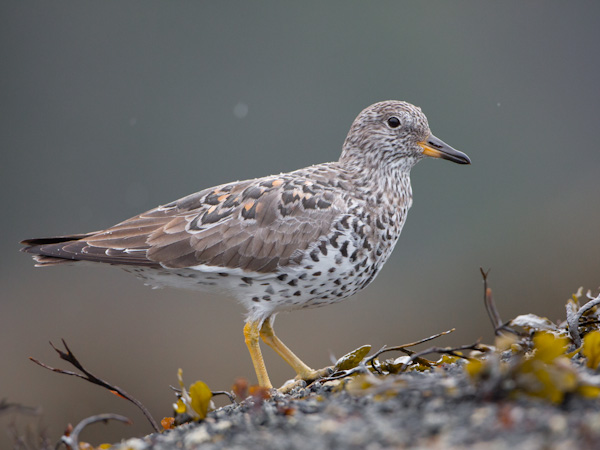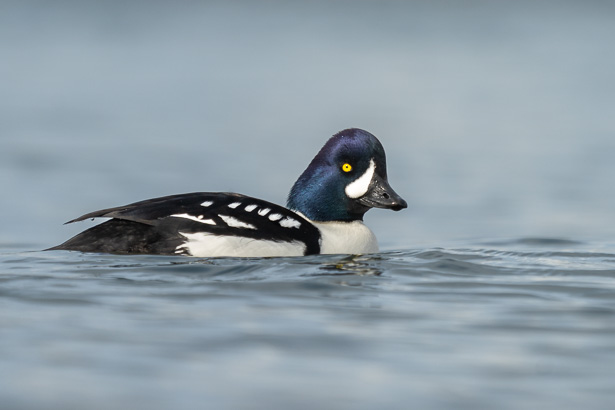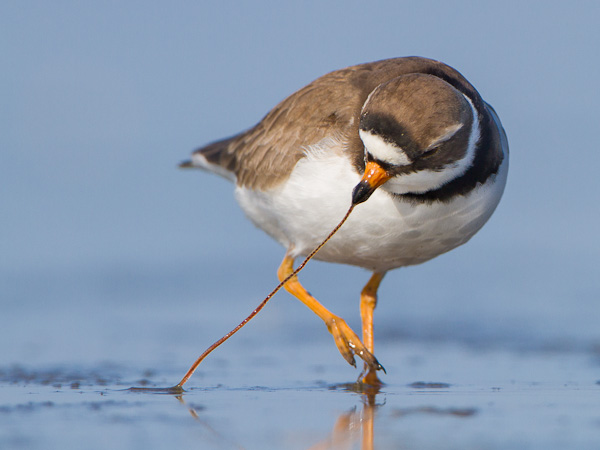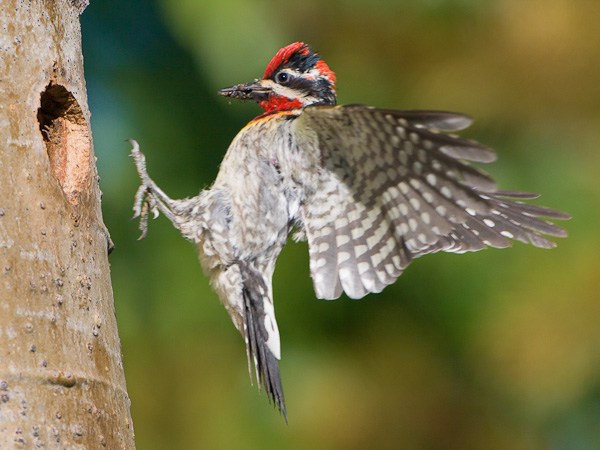
At an April presentation “ Adventures in Bird Photography” at Rainier Audubon, I listed a few tips for photographing birds. A short list, and the tip I thought most salient was “photograph the bird at its eye level”. For intermediate bird photographers—especally those passionate for more after their early forays at bird photography—I can’t think of a better tip. And though the argument here is about birds, it applies as well to other animals.
If you want intimacy and power in your wildlife images, photograph the animal at its eye level.
Photographing a bird at its eye level—call it eye-to-eye—brings an intimacy that’s lacking if you’re shooting up at a bird roosting on a high branch. Wait for the bird to come down off its roost, or scout until you find your target bird on a low and suitable perch. For birds like woodpeckers, nuthatches and chickadees at the nest, find a low-elevation nest, or use a ladder to put you near eye level.
The same issue applies for birds on the water, when you’re up on a boardwalk. Because you’re well above the birds, if you shoot down on them you give up the intimacy, the contact, the power in the photo. Better would be to give up on the boardwalk, and find a beach where you can get low. Wear waterproof pants and jacket, or neoprene waders. Mount your camera on a ground pod to get the low angle (I use a home-made rig, a 4” square block of wood I call Block Pod). If you really like photographing water birds, consider a kayak, or get even lower by building a floating blind.


Another benefit of eye level shooting, especially for birds on the water or shorebirds on the beach, is the bokeh magic of selective focus. Get low enough and background and foreground disappear into washes of out-of-focus color. Attention goes directly to the bird, without distraction. For the photographer, too, the experience can be enchanting. Watching shorebirds scurry about, frantic to fatten up in spring migration, transforms at eye level to a heroic intensity. It’s a wonder to witness, muddy clothes notwithstanding.
So give up the easy six-foot elevation worldview. You’re photography will soar even as your camera gets low.
Gary



